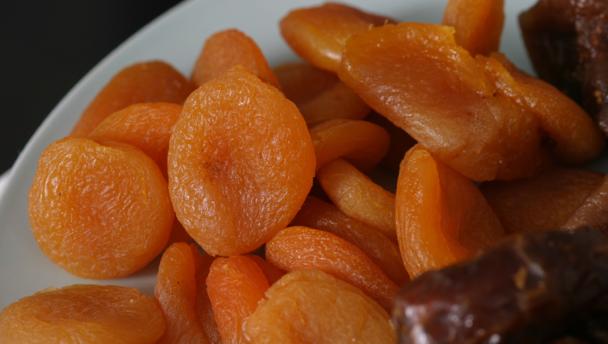

Dried apricots have an intense sweet-sour flavour and are high in fibre. They make an excellent substitute for fresh apricots out of season. They can be bought dried or semi-dried.
 Pork tenderloin stuffed with apricots, apples and ginger
Pork tenderloin stuffed with apricots, apples and ginger
 Hand-raised chicken and bacon pie
Hand-raised chicken and bacon pie
 Muesli
Muesli
 Kid’s customised couscous salad
Kid’s customised couscous salad
 Christmas apricot and chestnut stuffing
Christmas apricot and chestnut stuffing
 Chocolate fridge cake
Chocolate fridge cake
 Christmas trifle
Christmas trifle
 Tennis cake
Tennis cake
 Apricot almond cake with rosewater and cardamom
Apricot almond cake with rosewater and cardamom
 Christmas Genoa cake
Christmas Genoa cake
Dried apricots can be high in sulphur dioxide, which is commonly used in small quantities to prevent mould developing on the fruit. Many organic dried apricots are brown because they are sun-dried: sunlight oxidises their flesh, which acts as a natural preservative. Check labels as some semi-dried apricots are infused with sugar syrup.
Dried apricots contain les than 16% moisture and, when soaked, will absorb more liquid than semi-dried apricots. Use in stews, tagines and compôtes. If very dry, simmer gently before soaking to shorten the soaking time.
Semi-dried apricots are softer than dried as they are dried, partially rehydrated, then cooled in an air dryer to make them more succulent. They don’t need soaking. Use in muesli, bread, stuffing and salad.
Type the ingredients you want to use, then click Go. For better results you can use quotation marks around phrases (e.g. "chicken breast"). Alternatively you can search by chef, programme, cuisine, diet, or dish (e.g. Lasagne).